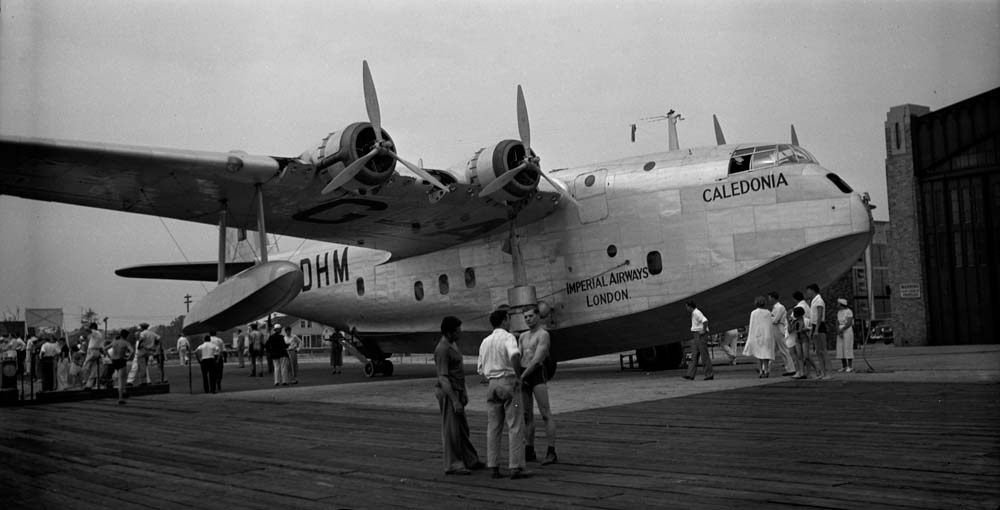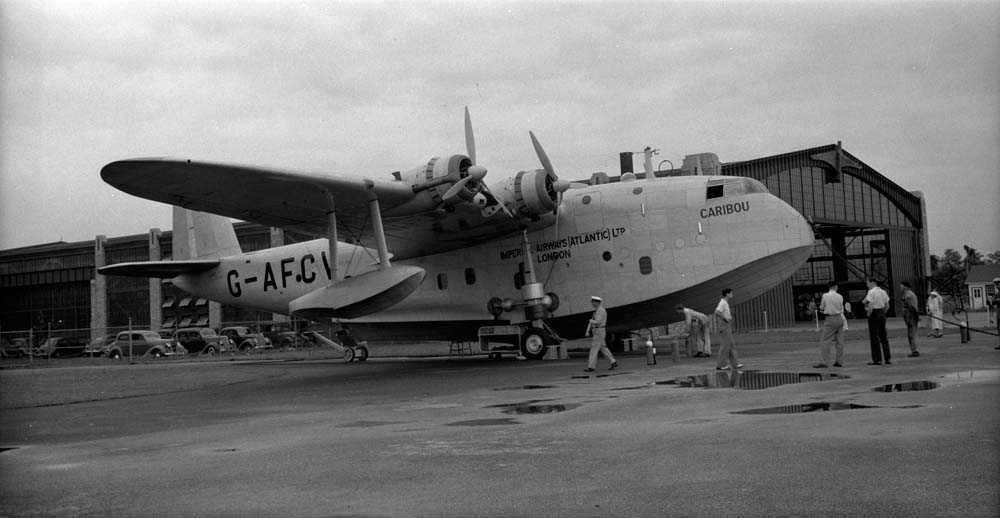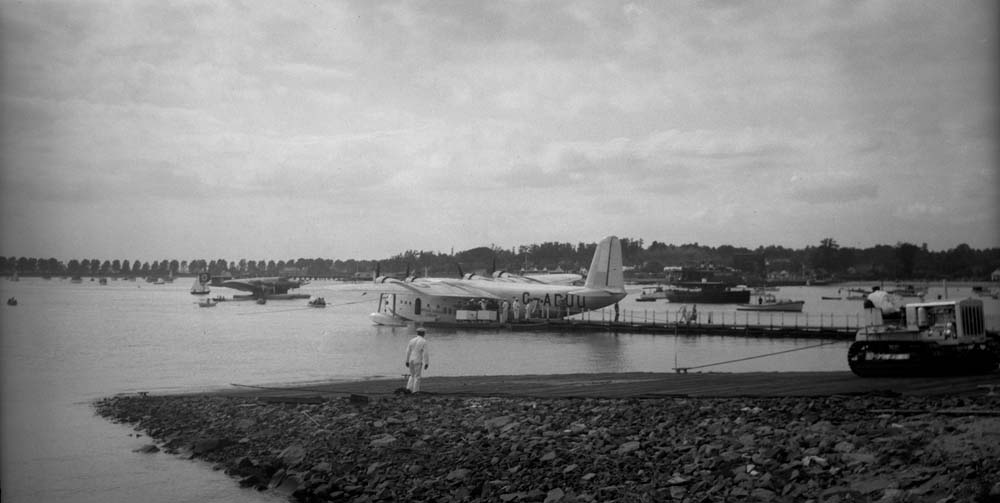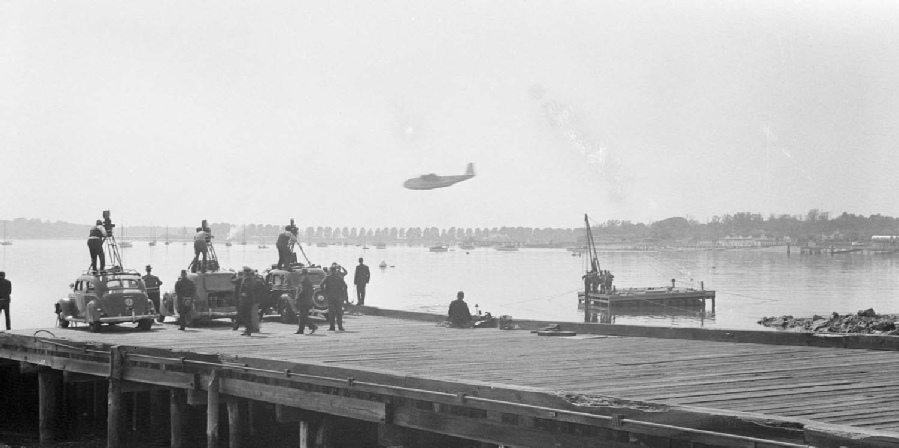

Pictures on this page are the Short Brothers S23 “C” Class Empire flying boats named (all beginning with “C”) Caledonia, Caribou, and Cavalier.
The arrival of an airplane from Europe was worthy of newsreels in the 1930’s.



The “Cavalier” ditched in the ocean on a trip to Bermuda on January 21,1939 and sank.
From Wikipedia:
“Accident:
Cavalier had left Port Washington on Long Island, New York, at 10:38 bound for Bermuda. At 12:23 p.m. the flying boat sent the message “Running into bad weather. May have to earth”, which referred to earthing the aerial; this was followed by another message at 12:27 Still in bad weather. Severe Static. Port Washington tried to call the Cavalier for the next 15 minutes but did not get a reply. At 12:57 Cavalier broadcast an S.O.S. message followed at 12:59 by “All engines failing through ice. Altitude 1,500 ft [457 m]. Forced landing in a few minutes”. Another message eight minutes later said she was still flying but on two engines; four minutes after that came a series of messages to say that she had come down in the sea. The last message, at 13:13, was the single word “Sinking”.
Rescue:
As soon as it was realized at Port Washington that Cavalier was going to land in the sea, Port Washington requested a Pan American World Airways Sikorsky S-42 flying boat from Hamilton, Bermuda, to go to her assistance. The United States Coast Guard sent a flying boat from Long Island to Cavalier's last known position but it did not find her. A United States Army Air Corps Boeing B-17 Flying Fortress heavy bomber made a sortie from Langley Field in Virginia to search for Cavalier but had to return before midnight without success. Other aircraft also tried in vain to find the Cavalier.
The U.S. Coast Guard also dispatched two cutters and two patrol boats to the scene; one was only 70 nautical miles (130 km) away but the other three had to come from Cape Cod, Massachusetts; New York; and Norfolk, Virginia. The commercial tanker Esso Baytown was the first to arrive at the scene of the accident and reported at 23:25 that she had sighted wreckage and had lowered her lifeboats. By listening for the sound of their cries – they were in fact singing – Esso Baytown rescued six passengers and four members of the crew who had clung together on the water for ten hours. The United States Navy gunboat USS Erie (PG-50) transferred a doctor to Esso Baytown but because of the high seas and darkness had to discontinue the search for any other survivors. The ten survivors were taken to New York, arriving on 23 January 1939; the other three people aboard were lost.”
This is a picture of the “Cavalier” at Port Washington. This picture was probably taken not too long before its fateful flight.
Open house for inspection of the Imperial Airlines “Caldonia”.
